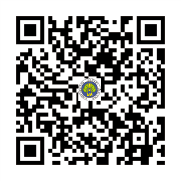Analisis kebutuhan bahan ajar ipa smp dengan mengeksplisitkan hakikat sains (NOS) dan berpikir kritis topik energi dalam sistem kehidupan
DOI:
https://doi.org/10.17977/um067v1i3p189–194Keywords:
scientific literacy, literasi sains, science instructional materials, bahan ajar IPA, nature of science, hakikat sains (NOS), critical thinking, berpikir kritisAbstract
Science instruction aims to achieving the student’s understanding about scientific literacy. However, students' ability of scientific literacy in Indonesia is far from expectation. Integration of scientific literacy aspects can be done into instructional materials. Instructional materials available nowadays not integrating scientific literacy aspects about energy in life system topics. Neccessary science instructional materials on energy in life system topics that potentially to development scientific literacy. This research use a case study of exploratory and results analysis neccessary science instructional materials with expliciting the nature of science and critical thinking on energy in life system topics.
Pembelajaran IPA bertujuan untuk mewujudkan siswa yang berliterasi sains. Namun, kemampuan literasi sains siswa Indonesia masih jauh dari harapan. Pengintegrasian aspek literasi sains dapat dilakukan terhadap bahan ajar. Bahan ajar yang ada belum mengintegrasikan aspek literasi sains pada topik energi dalam sistem kehidupan. Sehingga diperlukan bahan ajar IPA topik energi dalam sistem kehidupan yang berpotensi mengembangkan literasi sains. Penelitian ini menggunakan metode studi kasus eksploratis dan menghasilkan analisis kebutuhan bahan ajar IPA dengan mengeksplisitkan hakikat sains (NOS) dan berpikir kritis topik energi dalam sistem kehidupan
References
Aulia, A.N., Adisendjaja, Y.H, & Priyandoko, D.. (2014). Analisis buku teks biologi smp di kota bandung berdasarkan hakikat sains . Formica Education, 1 (1): 1-15.
Bell, R. L. (2009). Teaching the nature of science: Three critical questions. Best Practices in Science Education, 22, 1-6.
Bell, R. L., Matkins, J. J., & Gansneder, B. M. (2011). Impacts of contextual and explicit instruction on preservice elementary teachers' understandings of the nature of science. Journal of Research in Science Teaching, 48(4), 414-436.
Bell, R. L., Lederman, N. G., & Abd‐El‐Khalick, F. (2000). Developing and acting upon one's conception of the nature of science: A follow‐up study. Journal of Research in Science Teaching: The Official Journal of the National Association for Research in Science Teaching, 37(6), 563-581.
Cokadar, H. (2012). Photosynthesis and Respiration Processes: Prospective Teachers' Conception Levels. Education & Science/Egitim ve Bilim, 37(164).
Ennis, R. H. (1993). Critical Thinking Assessment. Columbus: The Ohio State University.
Ennis, R. H. (2011). The nature of critical thinking: An outline of critical thinking dispositions and abilities. University of Illinois, 2(4).
Handoko, E. A. (2012). Analisis hakikat sains (the nature of science) dalam buku teks pelajaran kimia SMA kelas XI (Doctoral dissertation, Universitas Negeri Malang).
Hershey, D. R. (2004). Avoid misconceptions when teaching about plants. Website
Holbrook, J., & Rannikmae, M. (2009). The meaning of scientific literacy. International Journal of Environmental and Science Education, 4(3), 275-288.
Kebudayaan, K. P. (2013). Materi Pelatihan Guru Implementasi Kurikulum 2013. Nuh, M.(2013). Kurikulum.
Kementerian Pendidikan dan Kebudayaan, M. P. (2013). Permendikbud No 81 A. Tahun 2013 tentang Implementasi Kurikulum.
Lederman, N. G. (2006, June). Research on nature of science: reflections on the past, anticipations of the future. In Asia-Pacific Forum on Science Learning and Teaching (Vol. 7, No. 1, pp. 1-11). The Education University of Hong Kong, Department of Science and Environmental Studies.
Lederman, N. G., Lederman, J. S., & Antink, A. (2013). Nature of science and scientific inquiry as contexts for the learning of science and achievement of scientific literacy. International Journal of Education in Mathematics, Science and Technology, 1(3).
Mahanani, I. (2020). Pengembangan bahan ajar materi reaksi redoks dan elektrokimia menggunakan pendekatan saintifik dengan mengeksplisitkan hakikat sains (NOS) dan berpikir kritis. SKRIPSI Mahasiswa UM.
Nazir, M. (2011). Metode Penelitian, Cetakan Ke Tujuh. Bogor: Penerbit Ghalia Indonesia.
Norris, S. P., & Phillips, L. M. (2003). How literacy in its fundamental sense is central to scientific literacy. Science education, 87(2), 224-240.
Organization for Economic Cooperation and Development (OECD). (2010). The Example of PISA Questions. Take The Test: Sample Questions From OECD’s PISA Assessments. Website http://www.oecd.org/pisa [accessed 7 September 2015].
Paraskevopoulou, E., & Koliopoulos, D. (2011). Teaching the nature of science through the Millikan-Ehrenhaft dispute. Science & Education, 20(10), 943-960.
Rahayu, S. (2014). Menuju masyarakat berliterasi sains: Harapan dan tantangan kurikulum 2013. In Seminar Nasional Kimia dan Pembelajarannya (pp. 27-40).
Rahayu, S. (2016). Mengembangkan literasi sains anak indonesia melalui pembelajaran berorientasi nature of science (NOS). Makalah disajikan dalam Pidato Pengukuhan Jabatan Guru Besar Universitas Negeri Malang, Malang, 17.
Rosana, D. (2014). Pendekatan saintifik dalam pembelajaran IPA secara terpadu. In Seminar Nasional Unnes (pp. 4-21).
Ross, P. A., Tronson, D., & Ritchie, R. A. J. (2006). Modelling photosynthesis to increase conceptual understanding. Journal of Biological Education, 40(2), 84-88.
Tinggi, D. J. P. Departemen Pendidikan Nasional (Depdiknas).(2008). Hasil Evaluasi Sistem Penjaminan Mutu Internal Perguruan Tinggi Tahun 2008.
Ulfatin, N. (2013). Metode penelitian kualitatif di bidang pendidikan: teori dan aplikasinya: studi kasus, etnografi, interaksi simbolik, dan penelitian tindakan pada konteks manajemen pendidikan. Malang: FIP Universitas Negeri Malang.
Wenning, C. J. (2006). A framework for teaching the nature of science. Journal of Physics Teacher Education Online, 3(3), 3-10.
Wenning, C. J. (2010). Science Literacy: What It Is, How to Assess It, and A Way to Achieve It. Website http://www.phy.ilstu.edu/pte/INDONESIA/PDFs/G.%20SciLit-What_%26_How.pdf [accessed 28 Agustus 2015].
Yuliati, L. (2008). Model-model Pembelajaran Fisika: Teori dan Praktek. Malang: LP3 Universitas Negeri Malang.




1.png)
4.png)









